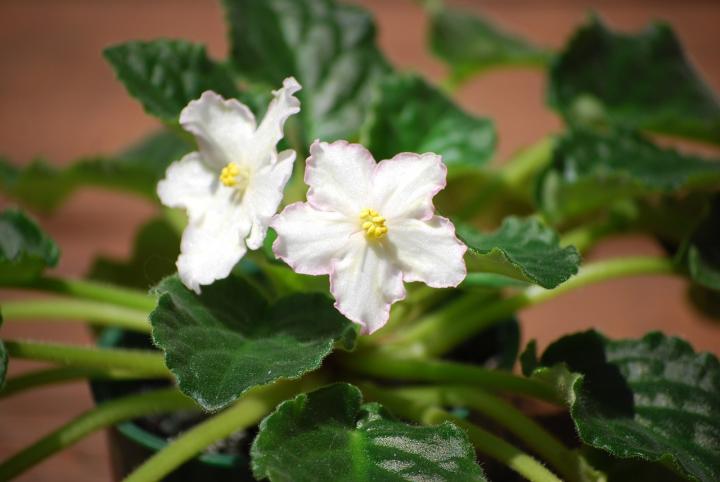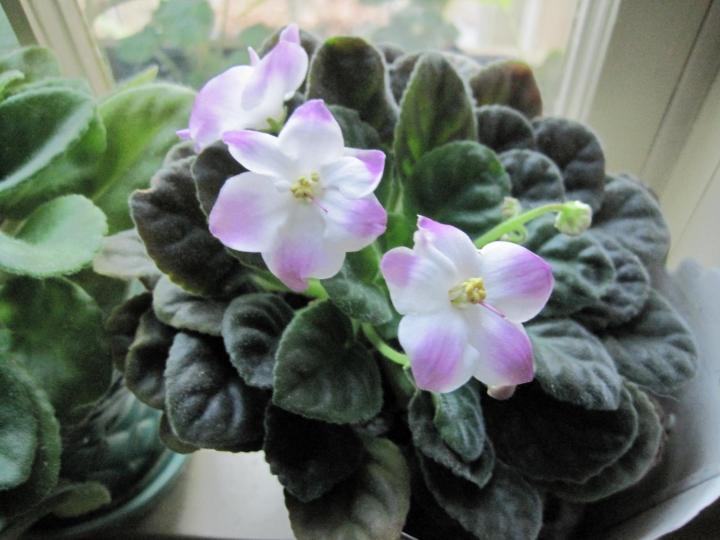African violets are beautiful houseplants which provide a pretty dose of color indoors. Find out how to take care of African violets through the winter and keep them blooming!
What Are African Violets?
If you are in need of some flowering companions to get you through the cold days of winter, look for a plant that hails from the southern hemisphere, the African violet.
African violets, Streptocarpus ionanthus (formerly Saintpaulia ionantha), are native to Tanzania and get their original Latin name from a 19th century colonial official and amateur botanist, Baron Walter von Saint Paul-Illaire, who was stationed in the east African country known then as Tanganyika.
He sent specimens of these wild violets home to his father in Germany and in a very short time African violet seeds and plants were available all over Europe.

Though these dainty flowers may look fragile they are pretty tough plants and easy to grow on a warm sunny windowsill. The blossoms come in a wide range of colors including all shades of purple, blue, pink, red, bi-colors, and white with single and double-flowering forms. Their fuzzy foliage is attractive as well with some leaves having ruffled edges or variegated with white and green.
Caring for African Violets
These plants have few demands but will reward you with almost constant bloom if they are happy.
- They appreciate a warm house: 65ºF to 75ºF during the day with a 5ºF to 10ºF drop at night.
- Bright indirect light is ideal, though during the short days of winter they can tolerate full sun.
- They bloom best when slightly pot-bound, so don’t be in a rush to move them into larger containers.
- Repotting African violets: Wait until your plant has outgrown its pot, ceased to flower, or develops multiple crowns before repotting. They are shallow rooted plants so they grow best in a pot that isn’t too deep.
- African violet soil: Use a fast draining African violet soil or make your own by combining equal parts potting soil, peat moss, and perlite or vermiculite.
- Plants with multiple crowns can be divided, giving you more plants to enjoy or share with friends. African violets are easy to propagate by rooting a leaf cutting in water or vermiculite.

- Watering African violets: Careful watering is the key to good African violet health. They like room temperature water. You can water them from the bottom by filling a saucer under the pot with water and letting it wick up through the soil. After 30 minutes drain off the excess; they don’t like to have cold wet feet. It is perfectly acceptable to water from the top as long as you take care not to get the leaves or center of the plant wet. Overwatering will kill them, so allow the soil to dry out a bit before watering. Fertilize regularly with a water-soluble houseplant fertilizer or one made especially for African violets.
The weather outside might be frightful but these plants are delightful, and before you know it they will be blooming up a storm for you!
See our complete African Violet plant care page for more information. Learn even more about growing African violets.












